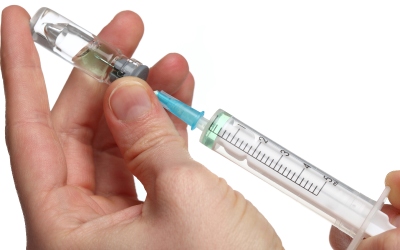Could a New Vaccine Protect You from Type 1 Diabetes?
When your wellness is affected by type 1 diabetes, your body doesn’t produce any insulin. This is different from the more common version of the disease – type 2 diabetes – in that type 2 involves your body either not producing enough insulin, or your cells ignoring insulin that is indeed present in your body. There is no cure for type 1 diabetes and so researchers often look into ways to prevent the disease and now a new study, published in the journal Science Translational Medicine, may have found a way to do exactly that.
In an early stage trial, a new vaccine for type 1 diabetes is showing promising results in stalling and preventing the autoimmune disease from manifesting. Up until now, type 1 prevention has revolved around suppressing your immune system, but this method can be damaging to your wellbeing in other ways; increasing your risk of cancer and infections. According to Dr. Richard Insel, chief scientific officer of the Juvenile Diabetes Research Foundation (JDRF), ‘What one really wants to do is tame or regulate the specific aspects of the immune system that have gone awry and leave the rest of the immune system intact.’
For the study, the Netherlands’ Leiden University Medical Centre and California’s Stanford University researchers experimented with the TOL-3021 vaccine, which was genetically altered so that it could shut down your harmful immune system cells without affecting the rest of your system. 80 type 1 diabetics, who were all receiving insulin injections, were given the vaccine for 12 weeks, which appeared to help maintain some insulin-producing beta cells within the pancreas. The vaccine raised people’s levels of C-peptides, which is a sign that the insulin beta cells were working, and lowered the number of immune system-killing T cells.
Study author Dr. Lawrence Steinman, a Stanford professor and the co-founder of company Tolerion – which was created to commercialise the vaccine when it is ready – commented, ‘So far, it looks like it is doing what we want. It looks like it has some potential, but very small numbers.’ The researchers are now designing a new and longer study, with the hope of recruiting as many as 200 patients.

Comments are closed.